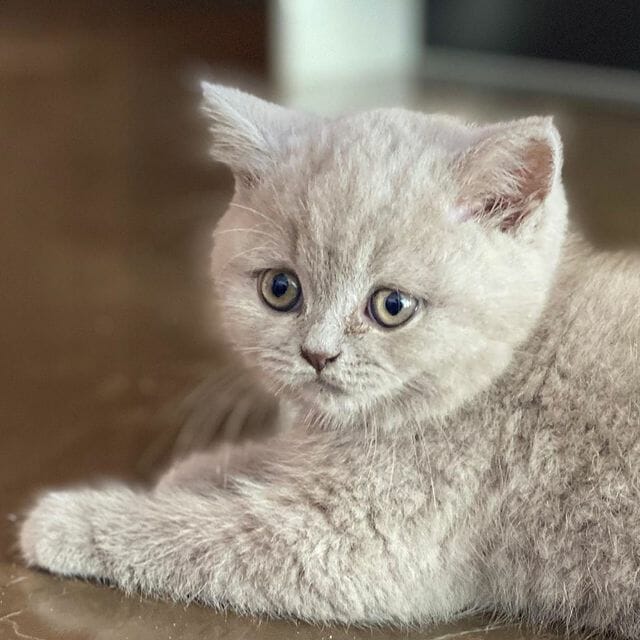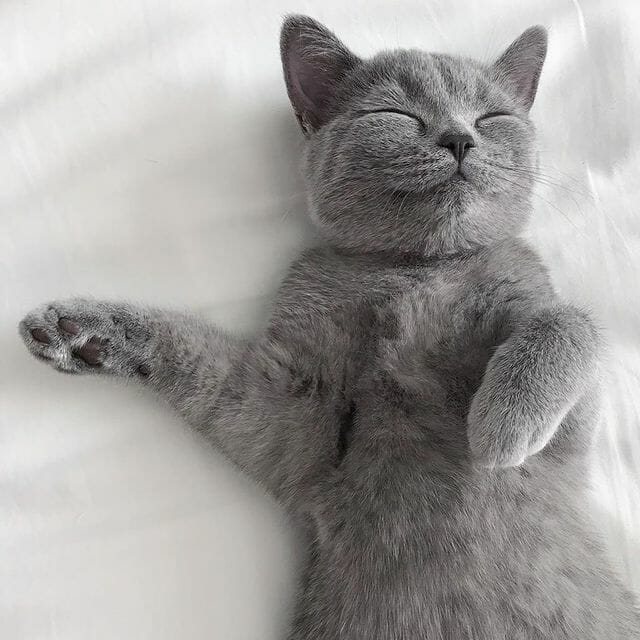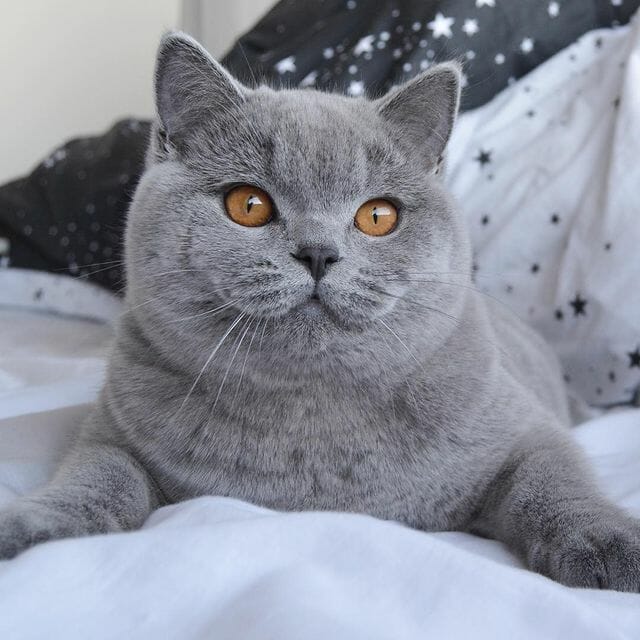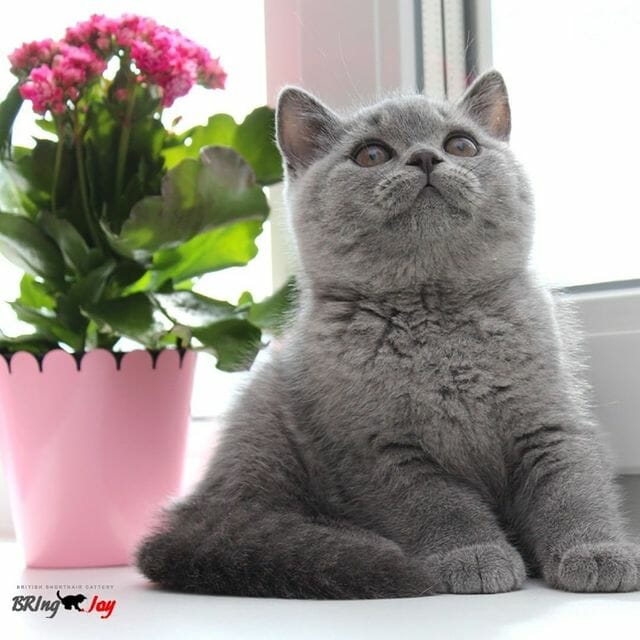Are British Shorthair Indoor Cats? (6 Reasons They Are)
While their wild instinct to hunt outside remains the same, a British Shorthair cat is known for being a great indoor pet. From its laid back and easy-going personality to its medium activity levels, such a type perfectly fits the life of an indoor pet.
That being said, below are six of the many reasons why cat enthusiasts deem a British Shorthair is an excellent indoor cat.
Table of Contents
Six reasons why British Shorthair is a great indoor cat
The definition of an excellent indoor British Shorthair cat varies from owner to owner. Each enthusiast considers different aspects to base their decision on as well but generally, the following traits are the reason why it makes an excellent indoor cat.


1. Medium energy levels. A British Shorthair cat is known for its laid back personality and inactive lifestyle. And such a characteristic is perfect if you want to keep your cat indoors without running around your house all day—which can be a bother at times, especially if you are working from home.
That said, BSH is a type of cat with a medium activity level and tends to get lower as it ages. You will only find it playful during its kittenhood. And once it turns 1-year-old, its energy level is reduced.
But don’t get it wrong. A British Shorthair cat still seeks attention and loves to play with their human companions. However, it does not last long and will immediately leave once it gets boring or feels tired and uncomfortable.
2. Furniture-friendly cats. A British Shorthair cat is also known for being a furniture-friendly pet. Hence, you do not need to worry about your apartment every time you leave. Because, unlike other breeds, these teddy-like cats can easily be trained to use scratching mats and posts instead of furniture.
But that is, if you provide one. Otherwise, it would naturally seek alternatives and that includes your furniture.
3. Great personality. Although a BSH cat’s behaviour differs from cat to cat, these teddy-like pets are generally easy-going, laid back, and independent by nature. Many cat enthusiasts deem it as a friendly and affectionate pet companion as well. Hence, you and your family members would not have a hard time getting along with it even if it stays inside your house most of the time.
Both male and female British Shorthair cats like the company of humans too. For example, they like to sit next to their owners or stay in the same room instead of sitting on a lap or being carried around.
But do take note that a male and a female cat share slight differences in behaviour too. The male cat, for instance, is deemed happy-go-lucky and easier to befriend while the female cat is a serious type.
4. Independent pets. Another reason that makes such a breed a good indoor cat is its independent nature. And as a cat enthusiast looking to adopt a pet that prefers to stay indoors, the said characteristic is crucial.
Having said that, a British Shorthair cat could be left alone for a few hours—and even up to 3 days, provided that it has access to food and fresh water—without getting depressed. On the one hand, if you plan to leave them longer than three days, I recommend you hire a cat sitter, a family, or a friend who could help keep your cat occupied while you are away.
5. Easy to groom. When it comes to grooming, British Shorthair cats are known for being low maintenance. Thus, you do not need to worry every time it sheds.
Things like this are just one of the many aspects aspiring cat owners consider. And for an indoor cat, it would be better to adopt a breed that would not make a mess every time it sheds, which BHS are capable of.
But do take note that this teddy-like breed also sheds a lot just like other cats. The only difference is that giving it a regular brushing (or weekly) would help keep its fur in good condition.
6. Friendly to kids and other pets. Another reason why a British Shorthair cat is a great indoor pet is it being friendly to kids as well as other pets.
Why?
Indoor cats stay in your house most of the time. And whether it gets along with you and your family or not is a big issue.
On the other hand, do take note that introducing a BSH cat to a “new pet” would not be easy. And that it may take some time and patience before it gets used to other pets like, say, a dog.


“Can British Shorthair cats go outside?”
A British Shorthair cat could definitely go outside. However, while it is okay to let such a breed hunt and frolic outside, many cat enthusiasts still recommend keeping it as an indoor pet.
In fact, many cat owners argue whether British Shorthair cats should stay indoors or not. Some pointed out that there are too many reasons why it is dangerous to let your cat go outside—especially alone—despite safety precautions to minimize risks. While, on the flip side, others claim that keeping them indoors is bad for the cat’s overall health.
On the one hand, some found a solution by balancing the two, which is either by creating a “catio” or walking your cat with a harness.


How to take care of an indoor cat’s health and safety?
Keeping your cat safe while maintaining good health requires much effort. You must groom them regularly, vaccinate them, keep their environment safe, and adequately provide them with basic needs such as food, water, and litter boxes.
That being said, below are a few more things you must take care of to keep your British Shorthair cat healthy and safe indoors.
1. Provide its basic needs. First thing first: provide the essentials. These things include food, water, a litter box, toys, and a space for alone time.
- Fixed feeding schedule. For indoor cats, vets often suggest a fixed feeding schedule to keep their weight in check. Two meals a day, with an 8 to 12-hour span, is most owners’ typical feeding schedule.
- It is best not to leave its bowl filled with dry or wet food all the time, as it allows your cat to eat whenever it wants. On the flip side, ensure it has access to freshwater 24/7.
- But if you are worried and want to know how often your British Shorthair should eat daily, I suggest you visit a vet and have it checked.
- Litter box. Since indoor cats rarely go outside, they will need their own space to use as their toilet. In other words, they should have their cat litter box.
- However, when setting up a litter box, remember that it needs to be in an area that is quiet and cozy enough not to disturb them. All cats want privacy when they do their thing, just like humans. And if, say, you own more than three indoor cats, it is recommended to use one tray for each.
- The litter box must be cleaned regularly as well. And it includes properly scooping and spot-cleaning their boxes.
- Scratching post or mat. All cats—including British Shorthairs—scratch their claws to mark an area as their territory. Hence, providing them with a scratching mat or post is recommended. Otherwise, they will find alternatives, such as your furniture.
- But remember to opt for a scratching post with a steady base taller than your cat. It is recommended to place it near your bed or sleeping area, as cats usually scratch their claws upon waking up.
- Give them their own space for alone time. Last but not least is a space for their alone time. Indoor cats must have their own “me time” just as much as humans need. So, do not forget to give them a cozy area to spend their time alone, unbothered.
2. Vaccinate your cat. You may think your cat is safe because it stays home most of the time. However, you should still vaccinate your pet for its overall health benefit. For instance, a few viral infections, like cat distemper, can cause viruses to stick to your shoes’ soles.
Indoor British Shorthair cats still need to take deworming shots twice yearly too. Kittens naturally acquire the worms their mother has once born, with their eggs lying dormant in the cat’s body tissues.
3. Consider spaying and neutering them. Cat spaying and neutering are vets’ recommendations for all cat enthusiasts. It is because unspayed and unneutered cats naturally want to mate and, as a result, attract stray cats that may have worms or feline viruses.
They are prone to getting pregnant as well. And if you are not yet ready for another litter of responsibility, that is a no-no.
4. Check for fleas. While indoor pets tend to have lower chances of getting fleas and ticks, keeping them safe from fleas and regularly checking them is still much better. There are a lot of products specifically for flea control. But you better ask for a recommendation from your vet.
5. Exercise. As mentioned earlier, a British Shorthair cat has lower activity levels than other breeds, which automatically translates to a sedentary lifestyle. And being inactive while aging at the same time is not healthy for cats.
That said, make sure that your cat gets enough exercise every day. Play with your pet regularly. You can use toys like mice, a feather, or a string to stimulate your cat.


How to keep your cat happy indoors?
You may wonder what indoor toys your British Shorthair cat would enjoy playing with. British Shorthair cats are generally calm and laid-back but still love to play and explore. Interactive toys, such as puzzle feeders and wand toys, are great for British Shorthair cats, as they provide mental stimulation and physical exercise.
You must provide your cat with all the necessities to keep it happy, contented, and comfortable at home. And that includes access to food, fresh water, a safe environment, and a handful of attention from you, its owner.
Here are a few more tips to keep your cat happy while indoors:
- Bond with your cat by regularly playing with it
- Let your cat see what’s going on outside through a window view.
- Bond your cat by training it
- Give your cat toys to play with while you are out.
